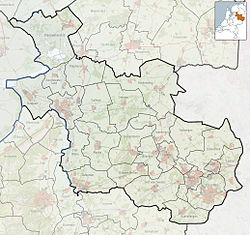
The history of the Jews in Indonesia began with the arrival of early European explorers and settlers, and the first Jews arrived in the 17th century. Most Indonesian Jews arrived from Southern Europe, the United Kingdom, the Netherlands, Belgium, Germany, France, the Middle East, North Africa, India, China, and Latin America. Jews in Indonesia presently form a very small Jewish community of about 500–1,000, from a nadir of about 20 in 1997. Judaism is not recognized as one of the country's six major religions, however its practices are allowed under Perpres 1965 No. 1 and article 29 paragraph 2 of the Constitution of Indonesia. Therefore, members of the local Jewish community have to choose to register as "Belief in One Almighty God" or another recognized religions on their official identity cards.

Moorish Revival or Neo-Moorish is one of the exotic revival architectural styles that were adopted by architects of Europe and the Americas in the wake of Romanticist Orientalism. It reached the height of its popularity after the mid-19th century, part of a widening vocabulary of articulated decorative ornament drawn from historical sources beyond familiar classical and Gothic modes. Neo-Moorish architecture drew on elements from classic Moorish architecture and, as a result, from the wider Islamic architecture.
The Nederlands-Israëlitisch Kerkgenootschap (NIK) is the umbrella organisation for most Ashkenazi Jewish communities in the Netherlands, and is Orthodox in nature, while to be described as traditional in outlook. The expression Orthodox, is for the Dutch situation at least, of a later date than the existence of the congregations that make up the NIK and the NIK itself. The Rabbi of the NIK is Rabbi Dr. Raphael Evers. In total, the NIK has some 20 rabbis actively working in 18 congregations throughout the country, serving some 5,000 Jews.

The Nederlands Verbond voor Progressief Jodendom is the umbrella organisation for Progressive Jews in the Netherlands, and is affiliated to the World Union for Progressive Judaism. It was founded in 1931.

The Portuguese Synagogue, also known as the Esnoga, or Snoge, is an Orthodox Jewish congregation and synagogue, located at Mr. Visserplein 3 in Central Amsterdam, Amsterdam, in the North Holland region of The Netherlands. The synagogue was completed in 1675. Esnoga is the word for synagogue in Judaeo-Spanish, the traditional Judaeo-Spanish language of Sephardi Jews.
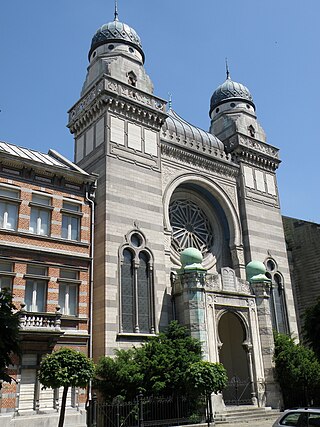
The Hollandse Synagoge, officially the Synagogue Shomré Hadas, and also known as the Bouwmeester Synagoge, is an Orthodox Jewish congregation and synagogue, located on Bouwmeestersstraat 7, in Antwerp, Belgium. Whilst the first Jews arrived in Antwerp in the 14th century, the congregation was not officially established until 1816. Descendants of Jews who came to Antwerp from the Netherlands in the early 19th century, built the synagogue in 1893 and it was the first large synagogue in Antwerp.

The New Synagogue was a former Reform Jewish congregation and synagogue, located in Oppeln, Germany. The synagogue was destroyed by Nazis on November 9, 1938, during Kristallnacht.

The New Synagogue was a former Reform Jewish congregation and synagogue, located in Gleiwitz, Germany.

The Delft Synagogue is a Reconstructionist Jewish congregation and synagogue, located at Koornmarkt 12, in the city of Delft, in the South Holland region of The Netherlands. Designed by L. Winkel in the Neoclassical style, the synagogue was completed in 1862, fell into disuse after World War II, was subsequently restored and reconsecrated from 1974.

Beth Shalom Temple, commonly referred to as El Patronato, is a Conservative Jewish congregation and synagogue, located in the Vedado neighbourhood of downtown Havana, Cuba.
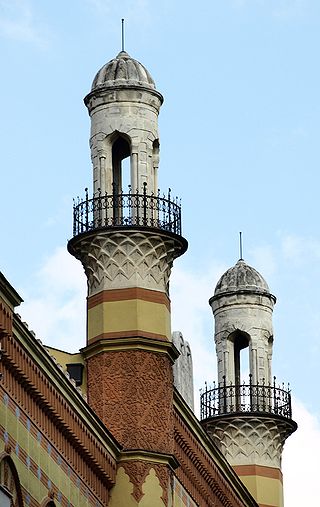
The Rumbach Street Synagogue, also called the Status Quo Ante Synagogue, is a Neológ congregation and synagogue, located in Belváros, the inner city of the historical old town of Pest, in the eastern section of Budapest, Hungary. Since 2021, the building has also been used as a concert hall and Jewish museum.

Congregation Beth Israel is a Reform Jewish congregation and synagogue, located at 1931 NW Flanders Street, Portland, Oregon, in the United States.
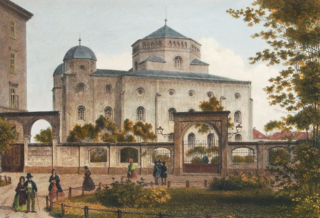
The Semper Synagogue, also known as the Dresden Synagogue or Old Synagogue, was a Jewish synagogue, located in Dresden, in the Saxony region of Germany. Designed by Gottfried Semper and built from 1838 to 1840 in the Romanesque Revival and Moorish Revival styles, the synagogue was destroyed by the Nazis on November 9, 1938, during Kristallnacht.

The Neveh Shalom Synagogue is a Reform Jewish congregation and synagogue, located in Paramaribo, Suriname. The congregation was established as an Orthodox community who worshipped in the Ashkenazi rite.

The Krnov Synagogue is a former Jewish synagogue, located on Soukenická Street in Krnov, in the Czech Republic. Completed in 1871, the former synagogue is one of only three surviving synagogue buildings in the Moravian-Silesian Region.
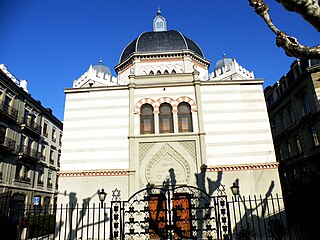
The Beth Yaakov Synagogue, also the Great Synagogue or the Grande Synagogue, is a Jewish congregation and synagogue, located at 11 Place de la Synagogue, Geneva, in the Canton of Geneva, Switzerland. Located in the heart of Geneva, the synagogue was completed in 1859 for the Ashkenazi Jewish community, which comprised about 200 people at the time of the synagogue's construction.
The Dutch Israelite Religious Community of The Hague is the Ashkenazi Orthodox Jewish community in The Hague and is a member of the Nederlands-Israëlitisch Kerkgenootschap (NIK).

The Surabaya Synagogue, officially the Beth Shalom Synagogue, was a former Jewish congregation and synagogue, located in Surabaya, Java, Indonesia. It is generally said to have been the only synagogue in the country during the years it operated, although since then Sha'ar Hashamayim has opened in Sulawesi.

The Gerard Doustraat Synagogue is an Orthodox Jewish congregation and synagogue, located at Gerard Doustraat 238, in the de Pijp neighborhood of South Amsterdam, in North Holland, the Netherlands. Designed by architect E. M. Rood in the Renaissance Revival style, the synagogue was completed in 1892.

The Synagogue of Anderlecht, officially the Synagogue of the Orthodox Jewish Community of Brussels, and also known as the Israelite Orthodox Synagogue of Cureghem, is an Orthodox Jewish synagogue, located in the heart of the former Jewish quarter of Cureghem/Kuregem, at 67A, rue de la Clinique/Kliniekstraat, in the municipality of Anderlecht, Brussels, Belgium. The synagogue is the main synagogue of the Israelite Orthodox Community of Brussels. It can be accessed from Clemenceau metro station on lines 2 and 6 of the Brussels Metro.

